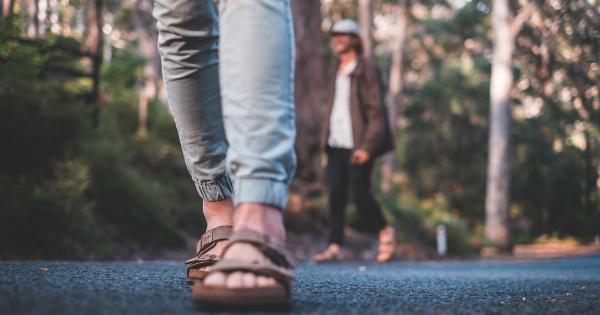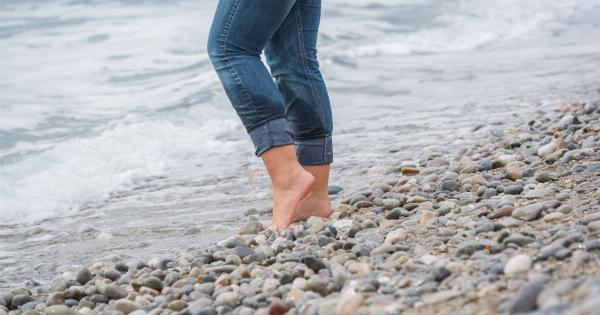Varicose veins are enlarged and twisted veins that often appear on the feet, ankles, and legs. They are caused by weakened valves and weakened walls in the veins, leading to poor blood flow and circulation.
Varicose veins are a common condition, affecting millions of people worldwide. They are more common in women than men and can be painful, uncomfortable, and unsightly.
Causes of Varicose Veins in the Feet
There are several causes of varicose veins in the feet:.
Age
As we get older, our veins become weaker and less elastic, which can lead to varicose veins.
Pregnancy
Pregnancy can put pressure on the veins in the legs and feet, increasing the risk of varicose veins.
Genetics
Varicose veins can run in families, so if your parents or siblings have them, you may be more likely to develop them too.
Lack of Exercise
If you sit or stand for long periods, your blood flow can become restricted, which can cause varicose veins to develop in the feet.
Preventing Varicose Veins in the Feet
Preventing varicose veins from developing in the feet is important. Here are some tips to help prevent varicose veins and improve circulation:.
Exercise
Regular exercise, such as walking, running, or cycling, can improve circulation and help prevent varicose veins from developing in the feet. Exercise also helps to strengthen the muscles in the legs, which can aid blood flow.
Wear Compression Stockings
Compression stockings are designed to improve circulation and reduce swelling. They work by putting pressure on the veins in the legs, which helps the blood to flow more efficiently.
Compression stockings come in different sizes and strengths, so it is important to choose the right one for you.
Elevate Your Feet
When you sit or lie down, it is a good idea to elevate your feet above the level of your heart. This can help to improve circulation and reduce the risk of varicose veins developing.
Avoid Crossing Your Legs
When you sit, try not to cross your legs, as this can restrict blood flow and cause varicose veins to develop.
Avoid Tight Clothing
Tight clothes, such as skinny jeans or tight leggings, can restrict blood flow in the feet and legs, which can lead to varicose veins. Wear loose-fitting clothing instead.
Eat a Healthy Diet
A healthy diet that is rich in fiber, vitamins, and minerals can help to improve circulation and reduce the risk of varicose veins.
Eating a balanced diet that includes plenty of fruits, vegetables, and whole grains is important for overall health and well-being.
Stay Hydrated
Drinking plenty of water can help to improve circulation and reduce the risk of varicose veins. Dehydration can lead to thickened blood, which can increase the risk of blood clots and varicose veins.
Avoid Smoking
Smoking can damage the walls of the veins, leading to weakened veins and poor circulation. Quitting smoking can help to reduce the risk of varicose veins and improve overall health.
Get Regular Check-Ups
If you are at risk of developing varicose veins, it is a good idea to get regular check-ups with your doctor. They can help to monitor your condition and provide advice on how to prevent and treat varicose veins.
Treatment for Varicose Veins in the Feet
If you already have varicose veins in the feet, there are several treatments that can help:.
Sclerotherapy
Sclerotherapy is a procedure that involves injecting a solution into the veins, causing them to collapse and disappear. This treatment is effective in treating smaller varicose veins.
Laser Treatment
Laser treatment is a minimally invasive procedure that uses laser energy to destroy the vein. This treatment is often used to treat larger varicose veins.
Surgery
In some cases, surgery may be necessary to remove varicose veins. This is usually only recommended if other treatments have been unsuccessful or if the varicose veins are causing severe symptoms.
Conclusion
Varicose veins in the feet are a common condition that can be prevented by making lifestyle changes. Regular exercise, wearing compression stockings, and avoiding tight clothing can all help to improve circulation and reduce the risk of varicose veins.
If you already have varicose veins, there are several treatments available that can help. It is important to talk to your doctor about the best treatment options for you.





























